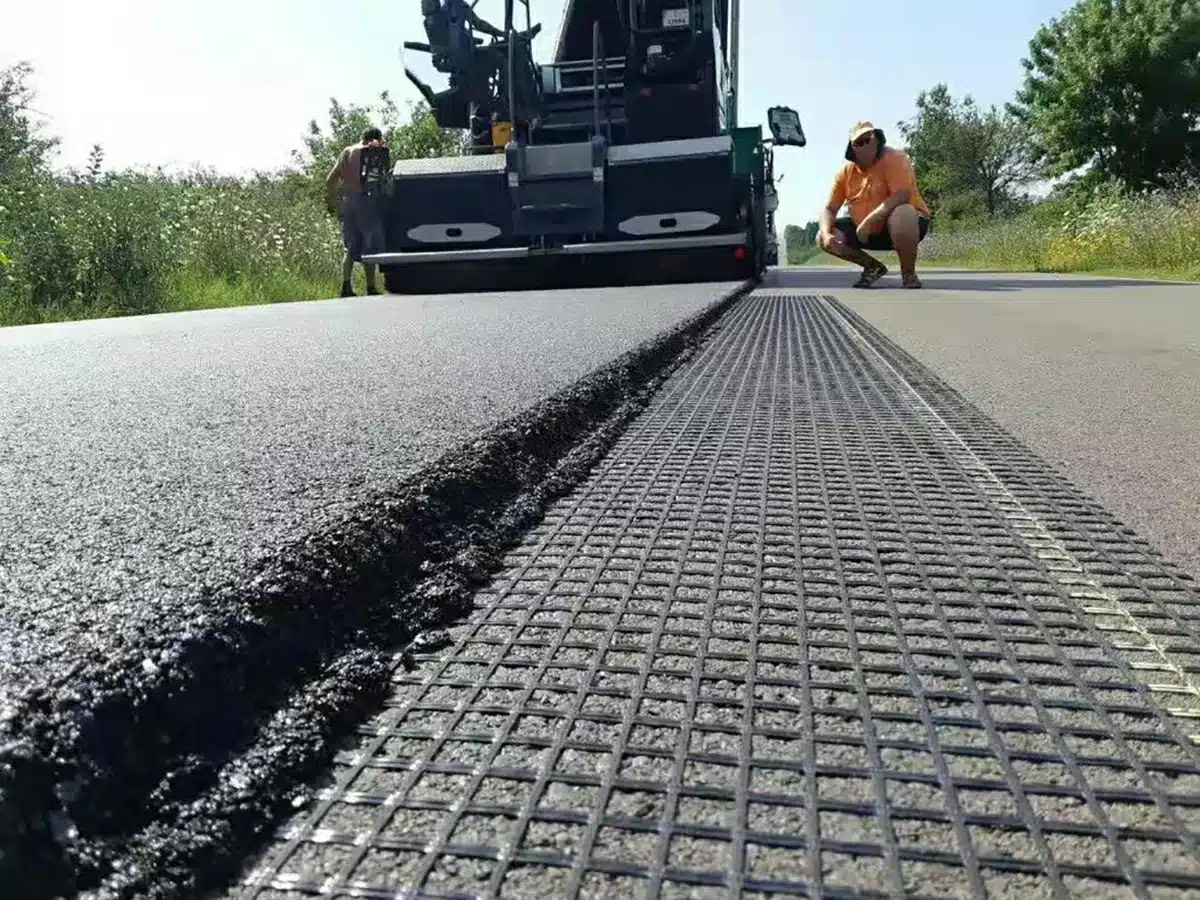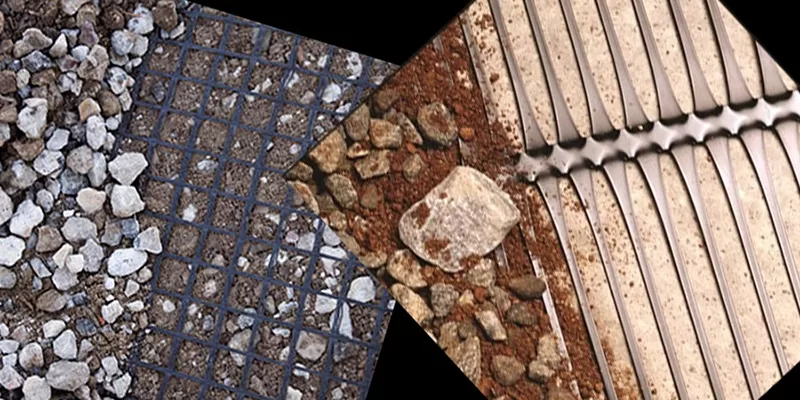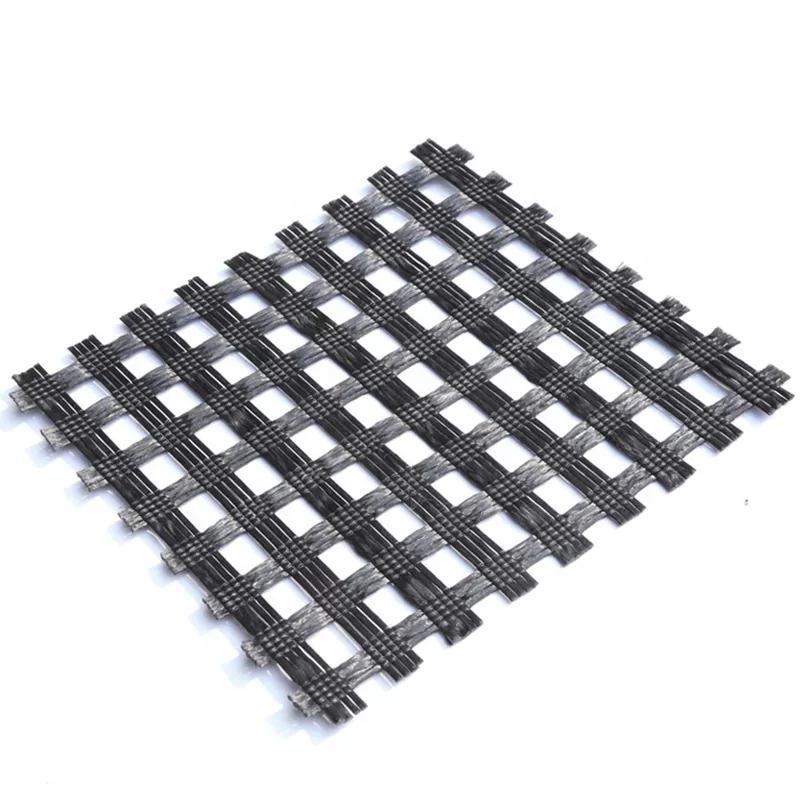+86-159 9860 6917
info@geofantex.com
geofantex@gmail.com
+86-400-8266163-44899
When considering the construction of a retaining wall, understanding the role of geogrid can be a game-changer in ensuring long-term stability and durability. This guide provides a deep dive into the world of geogrids, exploring their necessity, application, and the distinctions between geogrids and similar materials like geotextile. Whether you’re a homeowner looking to fortify your landscape or a professional in search of reliable solutions, this article sheds light on the key aspects of geogrids for retaining walls.

Is a geogrid necessary for a retaining wall?
Geogrid is a geosynthetic material used to reinforce soil, providing stability and strength to retaining walls. Its usage in construction projects is crucial for several reasons.
Importance of Geogrid in Retaining Walls:
- Enhanced Stability: Geogrid improves the overall stability of the retaining wall by interlocking with the soil, preventing lateral movement and potential collapse.
- Load Distribution: It helps in evenly distributing the load over a larger area, reducing the pressure on any single point and enhancing the wall’s load-bearing capacity.
- Increased Longevity: By reinforcing the soil, geogrid contributes to the durability and longevity of the retaining wall, making it more resistant to environmental factors like erosion and seismic activities.
- Cost-Effectiveness: The use of geogrid can reduce the amount of material required for the retaining wall, potentially lowering construction costs without compromising on safety and stability.
- Ease of Installation: Geogrid is relatively easy to install, making the construction process faster and more efficient while also ensuring the structural integrity of the retaining wall.
Using geogrid in retaining wall construction is essential for enhancing stability, distributing loads, increasing longevity, and achieving cost-effectiveness. Its role in reinforcing the soil makes it a necessary component in modern retaining wall projects.
How tall can a retaining wall be without geogrid?
The height a retaining wall can reach without geogrid reinforcement varies based on several factors, but typically, it is recommended that such walls should not exceed 3 to 4 feet (0.9 to 1.2 meters) to maintain stability and safety.
Factors Determining Height Limit
Material of the Retaining Wall:
- Concrete Blocks: Generally, more stable and can handle slightly greater heights.
- Natural Stone or Brick: Typically suitable for shorter walls due to potential instability.
- Wood: Less stable and more susceptible to environmental factors.
Soil Type and Conditions:
- Clay: Less stable, more prone to shifting.
- Sandy Soil: More stable but requires proper drainage.
- Rocky Soil: Generally more stable, and can support taller structures.
Drainage Conditions: Proper drainage systems are crucial to prevent water accumulation and pressure buildup behind the wall.
The slope of the Land: The steeper the slope, the lower the height limit for the wall without reinforcement.
Risks of Exceeding Height Limits
- Structural Failure: Walls exceeding recommended heights without a geogrid are prone to collapse.
- Soil Erosion: Increased pressure can lead to erosion and loss of structural integrity.
- Safety Hazards: Collapsed walls pose significant risks to nearby structures and individuals.
Alternative Methods for Stability and Strength
- Using Terracing: Constructing a series of shorter walls instead of one tall wall.
- Improving Drainage: Installing weep holes and proper drainage channels to reduce hydrostatic pressure.
- Anchoring: Using tiebacks or deadman anchors to provide additional stability.
- Selecting Appropriate Materials: Using high-quality materials designed for retaining wall construction to enhance strength.
For retaining walls without geogrid reinforcement, adhering to the 3 to 4-foot height limit ensures stability and safety. Evaluating material, soil conditions, drainage, and slope can help determine the best approach. Employing alternative methods like terracing and proper drainage can also improve stability for taller structures.
Now, imagine a world where plants could communicate with each other through underground networks of fungi. This phenomenon, known as the “World Wide Web,” allows plants to share nutrients, information, and even warnings about potential threats. It’s like the ultimate green internet, connecting vegetation in ways we’re only beginning to understand!

How far back should Geogrid go on a retaining wall?
The placement of Geogrid on a retaining wall depends on various factors crucial for stability and effectiveness. These factors include:
- Wall Height: Higher walls typically require deeper Geogrid placement to counteract the increased pressure from the retained soil.
- Soil Characteristics: The type and properties of the soil being retained influence the extent of Geogrid required for adequate reinforcement.
- Load Conditions: Consideration of any additional loads, such as surcharge loads or traffic loads, impacting the retaining wall.
- Geogrid Properties: Understanding the tensile strength and anchorage capacity of the Geogrid material to ensure it can withstand the forces exerted by the soil.
- Engineering Recommendations: Following engineering guidelines and specifications tailored to the specific project site and wall design.
- Local Regulations: Adhering to local building codes and regulations governing retaining wall construction and reinforcement materials.
Taking these factors into account ensures the Geogrid is placed at the optimal depth to provide effective reinforcement and stability to the retaining wall.
What is the difference between geogrid and geotextile?
Geogrid and geotextile are both materials used in geotechnical engineering for soil stabilization and reinforcement, but they have distinct differences:
Composition:
- Geogrid: Geogrids are typically made of polymer materials such as polypropylene, polyester, or high-density polyethylene. They have a grid-like structure with open spaces between the ribs.
- Geotextile: Geotextiles are made of woven or non-woven fabrics composed of synthetic fibers like polypropylene, polyester, or polyethylene.
Functions:
- Geogrid: Geogrids primarily function to provide tensile reinforcement. They are used to reinforce soil structures, retaining walls, embankments, and pavements by distributing loads over a wider area and improving bearing capacity.
- Geotextile: Geotextiles serve multiple functions including filtration, separation, drainage, and erosion control. They are used to prevent soil erosion, control sedimentation, facilitate drainage, and separate different soil layers.
Applications:
- Geogrid: Geogrids are commonly used in applications requiring high tensile strength and stiffness, such as road and railway embankments, reinforced soil slopes, and retaining walls.
- Geotextile: Geotextiles find applications in various civil engineering projects, including road construction, drainage systems, landfill liners, erosion control, and landscaping.
In summary, while both geogrid and geotextile play crucial roles in geotechnical engineering, geogrids primarily provide tensile reinforcement, whereas geotextiles serve diverse functions, including filtration, separation, drainage, and erosion control.
The incorporation of geogrid into the construction of retaining walls marks a critical step toward ensuring stability and durability. Whether it’s determining the necessity of geogrid, understanding its proper installation, or distinguishing it from materials like geotextile, this guide aims to equip homeowners and professionals alike with the knowledge needed to make informed decisions. By addressing common questions and highlighting essential considerations, we illuminate the path to constructing resilient and long-lasting retaining walls.



Get Free Sample
We’ll respond as soon as possible(within 12 hours)





















